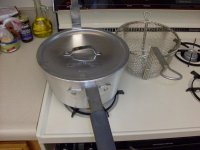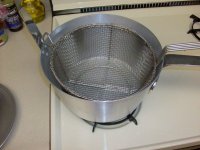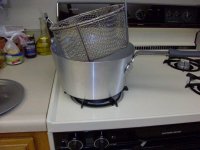"Stainless" steel... isn't actually stainless. The reason it doesn't rust is because there's enough chromium in the stainless alloy. Oxygen, instead of binding with the iron in the steel, preferentially binds with the chromium. This forms a very thin layer, a few molecules thick, of chromium oxide. This layer is called a 'passivation' layer, and it prevents further interaction of oxygen with the underlying metal, thus preventing rusting. Even if you scrub that layer off, it'll reform almost instantly as oxygen encounters fresh chromium.
However, chromium will react with chlorides (chlorine), better and earlier than it reacts with oxygen. So, if there's water with both dissolved oxygen and chlorine in it in contact with stainless steel, and the passivation layer of chrome oxide is scraped away, the chromium will react with the chlorine, leaving the oxygen free to react with the iron and cause rust.
So, what's the fuss with adding salt before your water boils?
Salt is sodium chloride. When you dissolve it, the sodium and chlorine are 'freed' to react. Oxygen dissolves in water (otherwise fish couldn't live). However, the warmer the water, the LESS oxygen (and nitrogen) it can hold. Now you know why all those little bubbles appear on the sides and bottom of a pot of water as you're heating it. That's the oxygen and nitrogen precipitating out because of the heat. Once the water gets near to the point of boiling, there's very little oxygen left dissolved.
So, you can see that salt AND oxygen together in water, along with the tiniest scrape (say, from a metal or even wooden spoon used to stir the water) against the surface of the inside of a stainless steel pot, can result in localized rust, or pitting.
The trick to avoiding that is to ONLY add salt *after* the water has become hot enough for the oxygen to have dropped out of solution. Then, even though a scrape might cause some iron to be exposed, it won't rust because there's too little oxygen in the water. And once you clean the pot, that passivation layer will form again in the absence of chlorides and the presence of oxygen.
So, yeah. Only add salt to water you'll be boiling after all the little air bubbles stop forming.







 If you make it in the microwave or like I do in the rice maker. No more boilover mess..
If you make it in the microwave or like I do in the rice maker. No more boilover mess..


